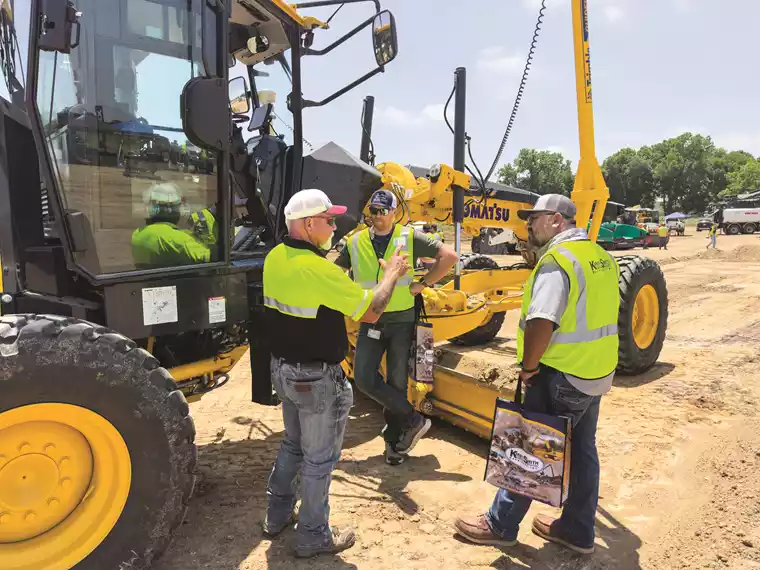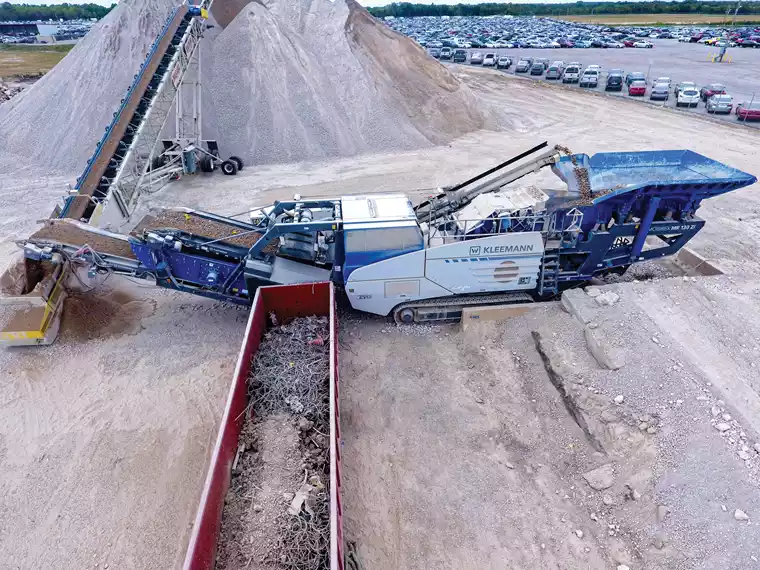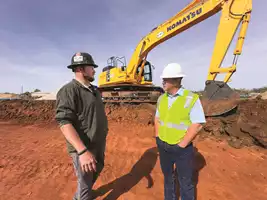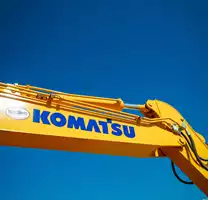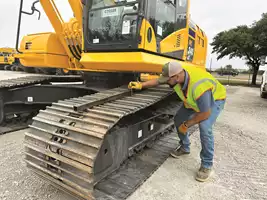Construction companies adopting innovations; expert advises using a measured approach
During the past two decades, the development and acceptance of construction technology has made huge strides. GPS-based grade control is a perfect example. It has evolved from masts and cables on the outside of machines to integrated systems that can automatically raise and lower dozer blades. Today, companies are increasingly accessing information about their machinery via mobile platforms such as smartphones and tablets, using Wi-Fi or cellular networks.
Construction companies that fail to embrace these new strategies may fall behind those that do and could eventually be forced to close. It’s essential to adopt innovations in today’s world, although firms should take a measured and realistic approach to implementation, says Damon Haber, Co-founder and Chief Revenue Officer at Record360, which helps businesses add the latest products to their operations.
“I was an operator before I became a tech guy, so I understand how it is affecting companies and individuals,” Haber said. “Like equipment, devices and apps don’t create outcomes; however, they can be valuable tools that help achieve them. Failures often happen when companies try to do too much or have no clear objectives as to why they want to implement certain solutions.”
Other obstacles to successful adoption include leaving key personnel out of the process and underestimating the impact of change. “Definitely take those factors into consideration prior to any final decisions,” advised Haber.
Mobile on the rise
Mobile solutions continue to grow in the construction industry, and this is one sector where caution is especially necessary, according to Haber. Technology can be used to track equipment for maintenance, order parts, locate machines and much more.
“Every major manufacturer has an app, and all are proven,” said Haber. “So, it’s not an issue of whether a construction company can use them; however, they must look at the technical considerations.”
Haber points to the devices themselves as a critical item for examination. “It’s important to consider the costs, as well as the features and benefits of each device. For instance, Apple and Android each have advantages and disadvantages.”
Additional factors to weigh include using Wi-Fi or cellular networks, data costs, native versus web platforms, security encryption, level of support from your provider and provider integration capabilities.
“All are important to analyze, although they should not deter companies from using mobile options,” said Haber. “Embracing them could be a key aspect in attracting new talent. Today’s younger workforce is already very familiar with how to use mobile devices. Studies show that millennials use their smartphones up to 223 minutes per day.”

Best practices include starting small
There are some best practices for introducing technology, mobile or otherwise. Among them are starting small, setting measurable goals and outcomes in addition to securing commitments from end-users.
“You can always get bigger,” Haber emphasized. “Before full implementation, it’s wise to do a pilot study and do it well. You should also look at today’s modern solutions and see how they can flex to match desired business goals.”
Best practices also include managing expectations, according to Haber. “Not everything needs to integrate or be perfect. There must be a clear vision for what success looks like.”
A more competitive future
Staying flexible and open to the latest advancements will remain vital to construction companies’ competitiveness and, ultimately, their survival. The future will continue to bring innovations that make jobsites more productive and efficient, if implemented with sound practices.
“We are on the cusp of major changes right now,” Haber stated. “5G for mobile is right around the corner, and it will be 100 times faster than 4G. Everything cellular will be affected, and we will be able to do things that were not possible before.
“I also believe artificial intelligence, including machine learning, will gain more prominence, as will augmented reality,” he added. “Companies should not be afraid of or intimidated by technology. They should view it as a means to enhance and improve their practices and increase competitiveness.” ■
Editor's note:
Some information for this article was supplied by Damon Haber, Co-founder and Chief Revenue Officer at Record360.
See more on technology with SMARTCONSTRUCTION here!
Learn more on intelligent Machine Control with Dozers and Excavators here!


